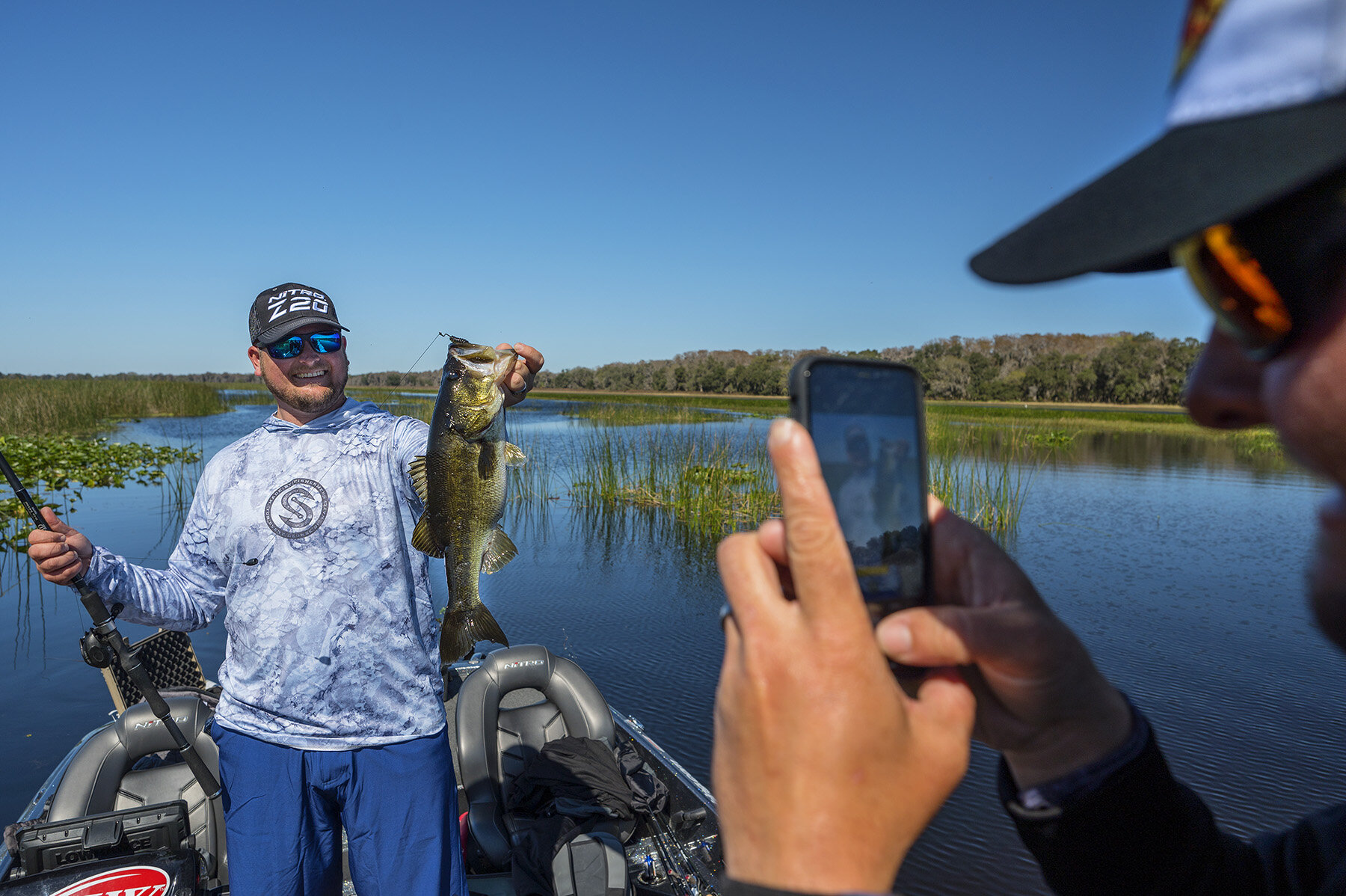The Different Types Of Sweetwater #1: Natural Lakes
/Not all fisheries are created equal. Just like all golf courses pose unique challenges to golfers, and all mountains have a different set of obstacles for skiers, the various types of fisheries throughout the country need to be approached according to their qualities, and how bass relate to those characteristics.
Today, let's talk about Natural Lakes.
Cover Beats Structure
The most important thing to remember about natural lakes is that they are old- really old! We humans create things fast, but mother nature takes her time, and natural lakes have been created through thousands of years of erosion, which means that the bottom has very smooth edges, and gradually sloping structural elements. That being said, some natural lakes are older than others, and generally speaking, the older the lake, the shallower, and less structurally diverse it will be. Lakes like Lake Okeechobee, which are very shallow, have a lot of emergent vegetation, and have a very gradual, bowl shaped, layout, are formed the way they are in part by thousands of years of aging. A lake like Champlain on the other hand, is a bit different in that it has sharper edges, structure is more pronounced, and the depth ranges are more diverse, which means there is less erosion.
Lake Champlain is an example of a natural lake that still has a lot of structural changes, like long points, bluff walls, and large humps. You can still have success fishing structure on a lake like this, but like any other natural lake, cover is still a big factor.
The Big "O" is one of those natural lakes with little structural variation. In this instance it is all about the grass.
So what is the point of all this information about the age of natural lakes? Well, personally, I grew up fishing natural lakes, and when I began fishing man-made reservoirs I started to realize that fish related to the two different types of lakes…..well……differently.
I realized that when it came to reservoirs the structural elements- like points, creek channels, ledges and so on- were very pronounced, and the fish tend to have a stronger attraction to the structure more than cover. On the other hand, in natural lakes, it seems that bass focus on cover, regardless of what kind of structure it is on. In natural lakes, my focus is always looking for the best cover, which is usually vegetation, and then I look for a bonus in slight structural changes to make that cover more effective. A great example could be a beautiful grass edge that is created more pronounced because of a sharp depth change. As mentioned before, not all natural lakes are the same, so lakes like Champlain, you can actually do really well focusing a little more on structure, like points and humps, as long as you still have the right cover.
My credo when it comes to natural lakes vs. reservoirs is: Structure enhances cover in natural lakes, while cover enhances structure in reservoirs.
In the ro-sham-bo of fishing, when speaking of natural lakes, grass always beats rock, unless rock is wrapped in grass…then rock and grass beat all. Ok….bad metaphor, but you get the point.
Bass….Bass….Everywhere!
One of the things that can make natural lake fishing simple, but also may make it overwhelming, is that bass spread out all over the lake. Unlike reservoirs, where bass move around a lot with seasonal patterns, natural lake fish can be very residential, meaning that as long as the right type of cover is in an area, they will stay within that general area, and make slight adjustments in location based on the conditions.
Find the right grass mixtures, and you can really load the boat with some natural lake bass.
In order to find fish in natural lakes I prefer to put the topographic maps aside for a bit, and instead focus on satellite imagery to find the areas of the lake that have the best looking water color, and best cover elements, such as vegetation. On the water color note, it is usually best to find areas of clear water in natural lakes. That doesn't mean gin-clear, but you definitely don't want muddy water in a natural lake. Also, when it comes to your on the water search, I like to use baits that allow me to cover water quickly, because often times all of a natural lake looks good, and you just need to put your nose down and find the locations where the biggest population of fish are. I like to use baits like Zman's Grass KickerZ, a Chatterbait, a spinnerbait or a lipless crankbait to cover water quickly.
Another recommendation is to make sure you have good polarized sunglasses. I cannot tell you how important it is to have a great pair of lenses on natural lakes. Natural lake fishing can really revolve around subtleties, and being able to see the little subtleties under the water, like submergent grass, can be a big key. I use Costa Permit frames with green mirror 580g lenses. This combo is perfect because the Permit frames have great coverage, shielding my eyes from all the peripheral light, and the green mirror lens has a copper and amber base color which brings out the green grass beds under the water where other color lenses might miss.
Simplicity is Key
Since fish can be just about anywhere in a natural lake, I recommend to people to JUST GO FISHING! I think that you will see a lot more success on natural lakes if you don't over think your fishing and focus on techniques that make you feel comfortable.
Hope this helps, and I wish you the best of luck on the water!

















